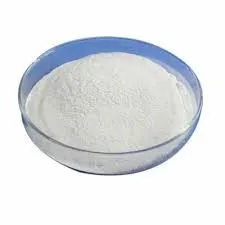
Août . 14, 2024 09:41 Back to list
Current Trends and Market Analysis of Hydroxyethyl Cellulose Pricing in 2023
Understanding the Price Dynamics of Hydroxyethyl Cellulose
Hydroxyethyl cellulose (HEC) is a non-ionic, cellulose-derived polymer that plays a crucial role in various industries due to its unique properties. Primarily used as a thickening, binding, and stabilizing agent, HEC finds applications in pharmaceuticals, cosmetics, food products, and construction materials. As industries evolve and consumer demands shift, understanding the price dynamics of hydroxyethyl cellulose becomes essential for manufacturers and end-users alike.
The pricing of hydroxyethyl cellulose is influenced by several factors, including raw material availability, production costs, market demand, and global economic conditions. Cellulose itself is derived from natural sources like wood pulp and cotton, and fluctuations in the availability of these raw materials can significantly impact HEC prices. For example, poor weather conditions or changes in agricultural policies can disrupt the supply chain, leading to increased costs for manufacturers and subsequent higher prices for consumers.
Understanding the Price Dynamics of Hydroxyethyl Cellulose
Market demand for hydroxyethyl cellulose has been steadily increasing, driven by its versatile applications. In the pharmaceutical industry, for example, HEC is widely used as a viscosity enhancer and stabilizer in various formulations. The cosmetic sector leverages HEC for its ability to improve product texture and consistency. Moreover, the demand for environmentally friendly products has led to an upsurge in HEC's use in plant-based formulations, further driving its market growth.
hydroxyethyl cellulose price

In addition to raw material costs and production expenses, global economic conditions also influence HEC pricing. The COVID-19 pandemic demonstrated how interconnected the global supply chain is, causing disruptions that affected availability and prices of raw materials. Following the pandemic, supply chain issues persisted, compounded by rising inflation rates worldwide. As transportation and logistics costs soared, manufacturers faced increased operational expenses, which often resulted in higher prices for hydroxyethyl cellulose.
Furthermore, regional markets also exhibit variations in pricing. In regions where the demand for HEC is high, such as North America and Europe, prices tend to be higher compared to markets where demand is moderate. Local regulations, taxes, and tariffs can further exacerbate these differences, creating a complex pricing landscape that varies from one geographical area to another.
To navigate these complexities, companies involved in the production and distribution of hydroxyethyl cellulose must adopt strategic planning. Understanding market trends, developing reliable supplier relationships, and investing in efficient production technologies can help mitigate cost increases. Moreover, fostering innovation in product formulations and applications can open up new markets, potentially stabilizing demand even during economic downturns.
In conclusion, the price dynamics of hydroxyethyl cellulose are shaped by a myriad of factors, from raw material availability to market demand and global economic conditions. As industries increasingly incorporate HEC into various applications, staying informed about these dynamics becomes critical for stakeholders. By understanding the intricacies of the HEC market, manufacturers and consumers can better navigate challenges and seize opportunities arising within this essential sector.
-
Unlocking the Benefits of HPMC Products: A Gateway to Versatile Applications
NewsAug.07,2025
-
Unleashing the Potential of HPMC Ashland: A Comprehensive Look
NewsAug.07,2025
-
Tile Bonding Cellulose: The Key to Superior Adhesion and Durability
NewsAug.07,2025
-
Hydroxypropyl Methylcellulose Powder: The Versatile Component in Modern Pharmaceuticals
NewsAug.07,2025
-
Hydroxyethyl Cellulose: The Versatile Solution for Various Industries
NewsAug.07,2025
-
Hydroxyethyl Cellulose (HEC): The Versatile Polymer for Various Applications
NewsAug.07,2025







